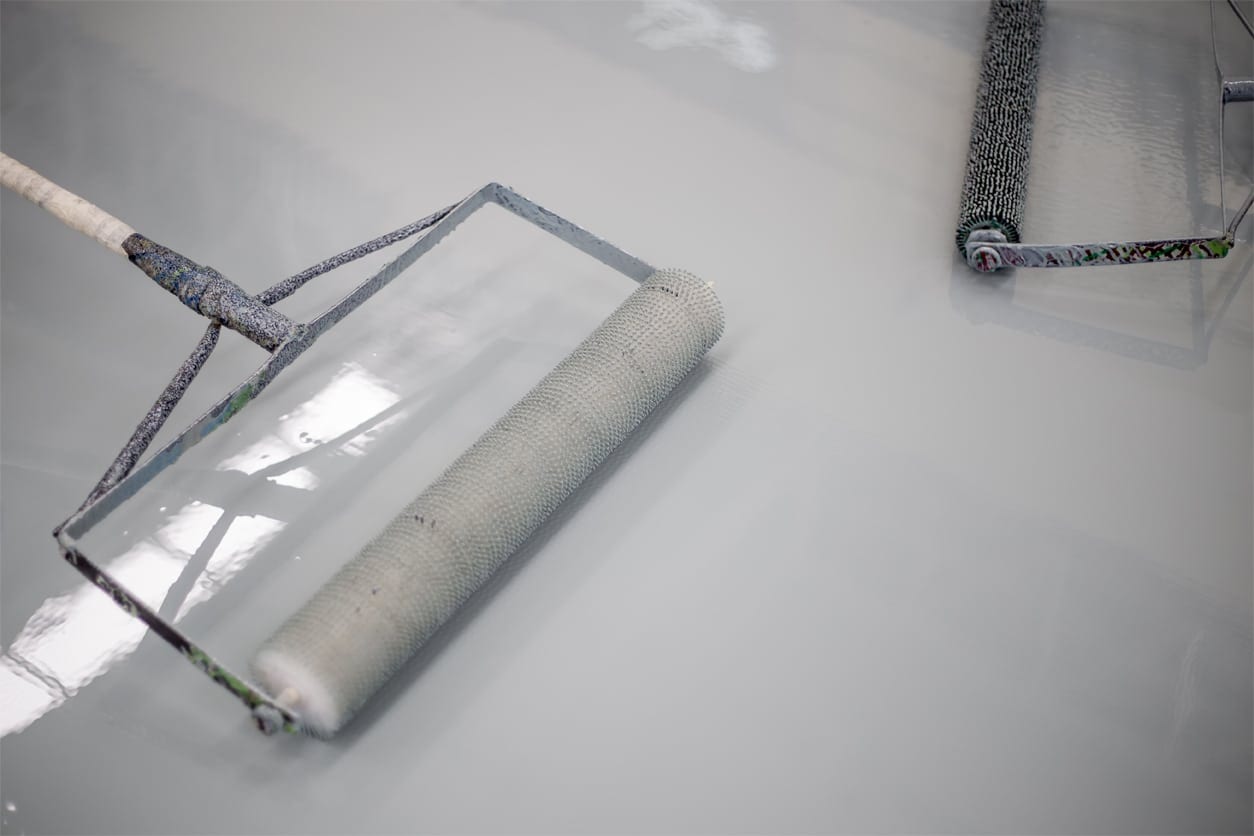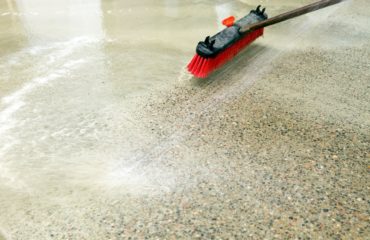Polyaspartics are fast becoming a veritable wonder product on the concrete sealer market today. These products are relatively new derivatives of the traditional aliphatic urethanes that have been around for a lot longer. Aliphatic urethanes are typically used as topcoats that feature incredibly strong levels of resistance to the most extreme weather conditions, water exposure, heat, abrasions, and other such threats to concrete. While urethanes are typically used as the topcoats in concert with epoxy base layers, they can also stand on their own.
Polyaspartics are newer product that are similar to urethanes. The biggest difference between a polyaspartic concrete sealer and a traditional urethane is that the polyaspartics feature incredibly short dry times. They can be applied to the large floor of a retail store, for instance, only to dry completely overnight and be ready for the store to open for full service the next day.
However, the biggest drawback to polyaspartics is their short pot-life. The pot-life is the technical jargon term for the amount of time before being applied that a solution can last without being ruined. That is to say, once you mix a polyaspartic, it all has to be applied within a certain (short) period of time before it becomes unusable. A short pot-life is typical for a product that cures rapidly, as do polyaspartics. And, while this can be an inconvenience, it is not the end of the world, as there are proven ways to work around the limitation.
A general rule of thumb is that polyaspartics with a lower solids content will have a longer pot-life. Polyaspartics typically have a solids content between 70% to 100%; therefore, a product with a solids content of 70% will have a longer pot-life than a product with a 100% solids content. Another factor that makes the pot-life shorter is the amount of moisture, typically in the form of humidity, that the mixed polyaspartic is exposed to – the more moisture/humidity, the shorter the pot-life.
In order to extend the effectiveness of the polyaspartic, it is best to mix small amounts of the product more often in order to work around the short pot-life. As polyaspartics need to be mixed together before use, it is best to mix as you go, applying the polyaspartic between mixing breaks (even if this means mixing more often), in order to maximize the potential.




